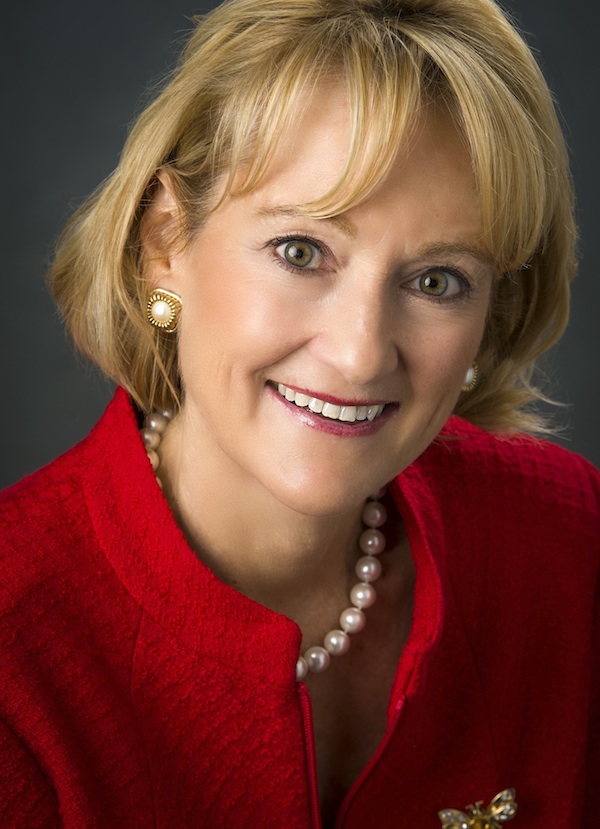Making an Inclusive Culture the Norm
 If you’ve been following the news lately, you may have noticed the topic of inclusion coming up more frequently, particularly in political circles. In a speech earlier this month on the 2015 national security strategy, National Security Advisor Susan Rice emphasized the importance of helping countries in transition become more inclusive societies, as well as promoting equality here at home.
If you’ve been following the news lately, you may have noticed the topic of inclusion coming up more frequently, particularly in political circles. In a speech earlier this month on the 2015 national security strategy, National Security Advisor Susan Rice emphasized the importance of helping countries in transition become more inclusive societies, as well as promoting equality here at home.
“We believe everyone should be able to speak their minds and practice their faith freely,” said Rice. “We believe that all girls deserve the very same opportunities as boys. We believe that all humans are created equal and are worthy of the same love and respect—including our lesbian, gay, bisexual, and transgender brothers and sisters. These beliefs are fundamental to who we are.”
Rice added that working to advance this type of equality and inclusiveness as a nation is not only morally the right thing to do, but a smart strategy. “If we reduce disparities, which can lead to instability and violence, we increase our shared security,” said Rice. “Reams of empirical evidence demonstrate how countries do better—across every metric—when they tap the talents of all their people.”
If this latter statement sounds familiar, that’s because in Corporate America, research has similarly shown that the most inclusive cultures end up being the most successful ones. In a recent example, a 2014 study from DDI found that organizations with the top 20% of financial performance have the most women in leadership roles. (Perhaps not surprisingly then, the companies with the fewest female leaders are at the bottom of the barrel when it comes to financial performance.) Other studies have shown that firms with female corporate board members are 42% more profitable than those without them.
 My 2015 Speaking Initiative, “All Voices On Deck” calls out that there’s a reason for these numbers that goes far beyond just trying to even up the score through inclusiveness. The reason is that our old systems and previous ways of leading are outdated based on the complexities of the 21st century. As explained in detail in my recent book on integrated leadership, Make Room for Her, the idea of a new leadership model is no longer just a nice thing to do—it’s a corporate imperative, as well as a global one.
My 2015 Speaking Initiative, “All Voices On Deck” calls out that there’s a reason for these numbers that goes far beyond just trying to even up the score through inclusiveness. The reason is that our old systems and previous ways of leading are outdated based on the complexities of the 21st century. As explained in detail in my recent book on integrated leadership, Make Room for Her, the idea of a new leadership model is no longer just a nice thing to do—it’s a corporate imperative, as well as a global one.
A growing number of leaders have started to recognize that what worked for them in the past is no longer effective given today’s realities. As Gary Stuggins, recently retired executive vice president of the World Bank, shared with me, there’s an “underlying force” that’s causing organizations worldwide to rethink their approach to planning, decision-making, engaging with employees, and interacting with clients. This, in turn, is reshaping how leadership operates—or if it isn’t, it should be. Companies that fail to recognize that the level of complexity and ambiguity—as well as the challenges of a much more global focus—have increased significantly for every organization will find themselves on that bottom rung of performers.
As Dottie Brienza, Head of Global Organizational Performance and Talent at Bristol-Meyers Squibb, told me: “Our customers, like our planet, are diverse, with different likes and needs. If we only have one type of executive—whether that be all women, all male, or whatever—when we’re dealing with human beings and relationships, we will be limited—only recognizing that narrow slice of the world—and we’ll miss all kinds of opportunities, even conversations that are ultimately crucial to our success.”
Clearly, both organizations and society as a whole need to continue moving toward operating in a more inclusive and integrated way. In order to thrive in the 21st century—no matter who you are, what your position is, or where you live—you need to take specific steps to tap into the broad and diverse ideas of everyone around you, remembering that women are more than 50% of our collective global voice.
In my next post, I’ll share some of the latest strategies detailing what women, men, and organizations can do to help create a culture of inclusion that works better for us all.
To learn more about how SHAMBAUGH can help you build inclusive/integrated leadership within your organization visit www.shambaughleadership.com
Rebecca Shambaugh’s 2015 Speaking Initiative
"All Voices on Deck"
Learn about Rebecca’s compelling messages and new topics for
Leaders in the 21st Century by visiting:
Rebecca Shambaugh is author of the best-selling books “It’s Not a Glass Ceiling, It’s a Sticky Floor,” “Leadership Secrets of Hillary Clinton,” and “Make Room for Her: Why Companies Need an Integrated Leadership Model to Achieve Extraordinary Results”








